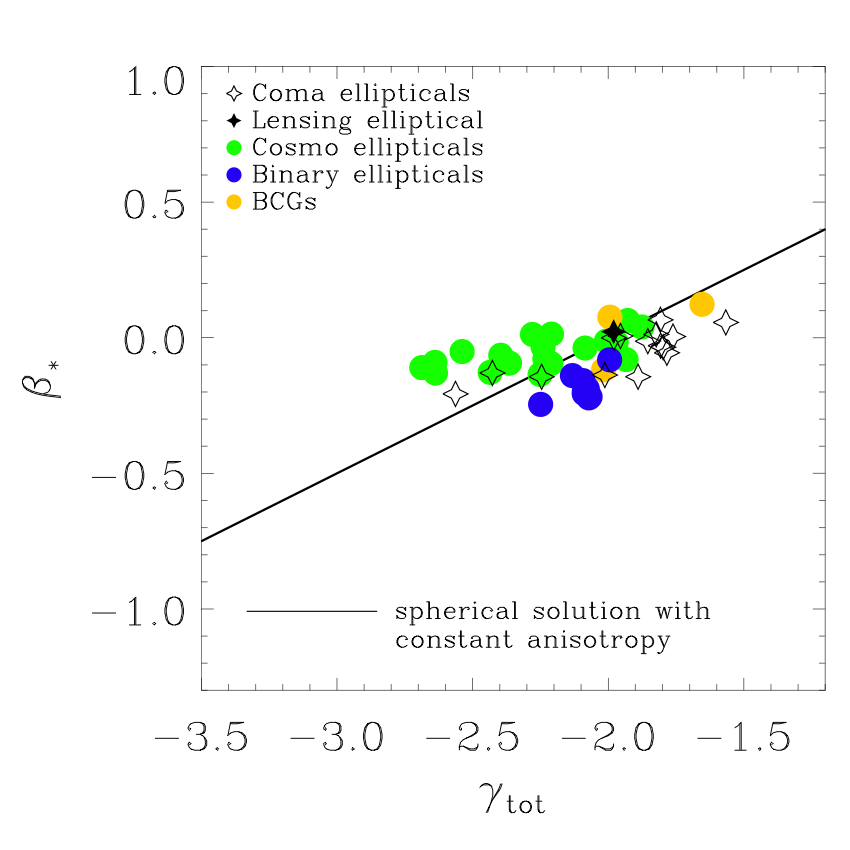The Dark Halo-Spheroid Conspiracy
and the Origin of Elliptical Galaxies
by Rhea-Silvia Remus
Strong lensing data and dynamical modeling indicate that the total density profiles of early-type galaxies are close to isothermal, i.e. ρtot ∝ rγ with γ ~ -2. To understand the origin of this universal slope we study a three sets of simulated spheroids: Spheroids formed in isolated binary merger events (see Johansson et al 2009), spheroids formed in cosmological hydrodynamical zoom-in simulations (see Oser et al 2010 for more details), and spheroids formed in a full hydrodynamical cosmological simulation (Dolag et al, in prep.). We find that the total stellar plus dark matter density profiles of all our simulations can be described by a power law with a slope of γ ~ -2.1, with a tendency towards steeper slopes for more compact, lower mass ellipticals in case of the cosmological simulations, while the total intrinsic velocity dispersion is flat for all simulations, independent of the values of γ and the simulation type. As shown in the figure, our results for the cosmological simulations are in good agreement with observations of Coma cluster ellipticals (see Thomas et al 2007) and results from strong lensing (see Sonnenfeld et al 2012). In the binary mergers the amount of gas involved in the merger determines the steepness of the slope. This agrees with results from the cosmological simulations, where for redshifts larger or equal z = 2, the majority of the stellar build-up occurs through in-situ star formation, i.e. the gas falls to the center of the galaxy and forms stars, causing the galaxy to be more compact and thus the stellar component to be more dominant. As a result, the total density slopes at z~2 are generally steeper (around γ~-3). Between z=2 and z=0 galaxies grow mostly through dry merging, with each merging event shifting the slope more towards γ ~ -2. This is called the two-phase formation of early-type galaxies and is studied in more detail in Oser et al 2010. We conclude from our simulations that the steepness of the slope of present day galaxies is a signature of the importance of mostly dry mergers in the formation of an elliptical, and suggest that all elliptical galaxies will with time end up in a configuration with a density slope of γ~-2.
For a more detailed analysis see Remus et al (2012).
